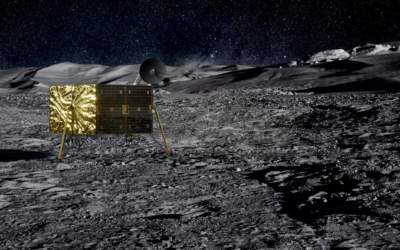Masten Space Systems, a leader in vertical takeoff, vertical landing (VTVL) rocket vehicles, successfully demonstrated an in-air engine relight capability today at the company’s test facility in Mojave, CA. Xombie, Masten’s most-flown vehicle, carried out the test Wednesday and became the first VTVL vehicle to successfully re-light a rocket engine in flight.
VTVL launch vehicles conserve fuel by shutting down their engines during the coast and re-entry phase of a flight. Being able to relight the main engine is critical to safely landing the vehicle. Combining throttle-ability and restart-ability in the same propulsion system improves vehicle capability, flexibility, and operability.
“We’re extremely excited and very proud to announce that we now have in-air relight capability,” said David Masten, CEO. “The ability to turn off our engine, reignite it in flight, successfully regain control and land was the next big milestone as we expand our flight envelope to include high altitude flights. Each milestone we hit makes the path to space much clearer.”
Masten Space Systems continues to lead VTVL vehicle development; coming off a win in the NASA and Northrop Grumman funded Lunar Lander Challenge in October 2009. In-flight reignition of Masten’s internally developed engine technology is crucial for higher altitude flights with access to premium microgravity, as well as for upper atmospheric scientific measurements.
“This was by far the coolest rocket flight I’ve ever seen,” said Ian Garcia, Masten’s Guidance, Navigation, and Controls Engineer. Much of the work necessary for the in-flight re-light involved custom flight control software written by Garcia. Ben Brockert and Jonathan Goff engineered the propulsion and vehicle systems to allow for a 2 second cycle time from shutdown to restart.
With the completion of this milestone, Masten Space Systems will turn to vehicle development tasks such as supersonic aerodynamics, aerodynamic controls and space-capable electronics.
About Masten Space Systems
Masten Space Systems is enabling sustainable access and utilization of the Moon, Mars, and beyond. Founded in 2004, Masten has been building and flying reusable rockets for nearly two decades with the most successful rocket-powered landings in the industry. The company is now applying its terrestrial rocket experience to lunar missions that will accelerate space ecosystems and enable new commercial applications. Masten’s end-to-end mission solutions include everything from tech development and testing to off-Earth delivery and operations. Based in Mojave, California, Masten aims to unlock the value in space to benefit humans on Earth, starting with Masten Mission 1 to the lunar south pole.


